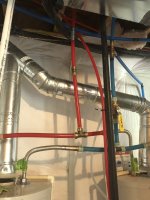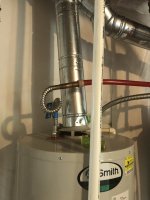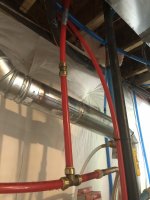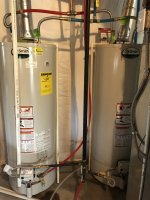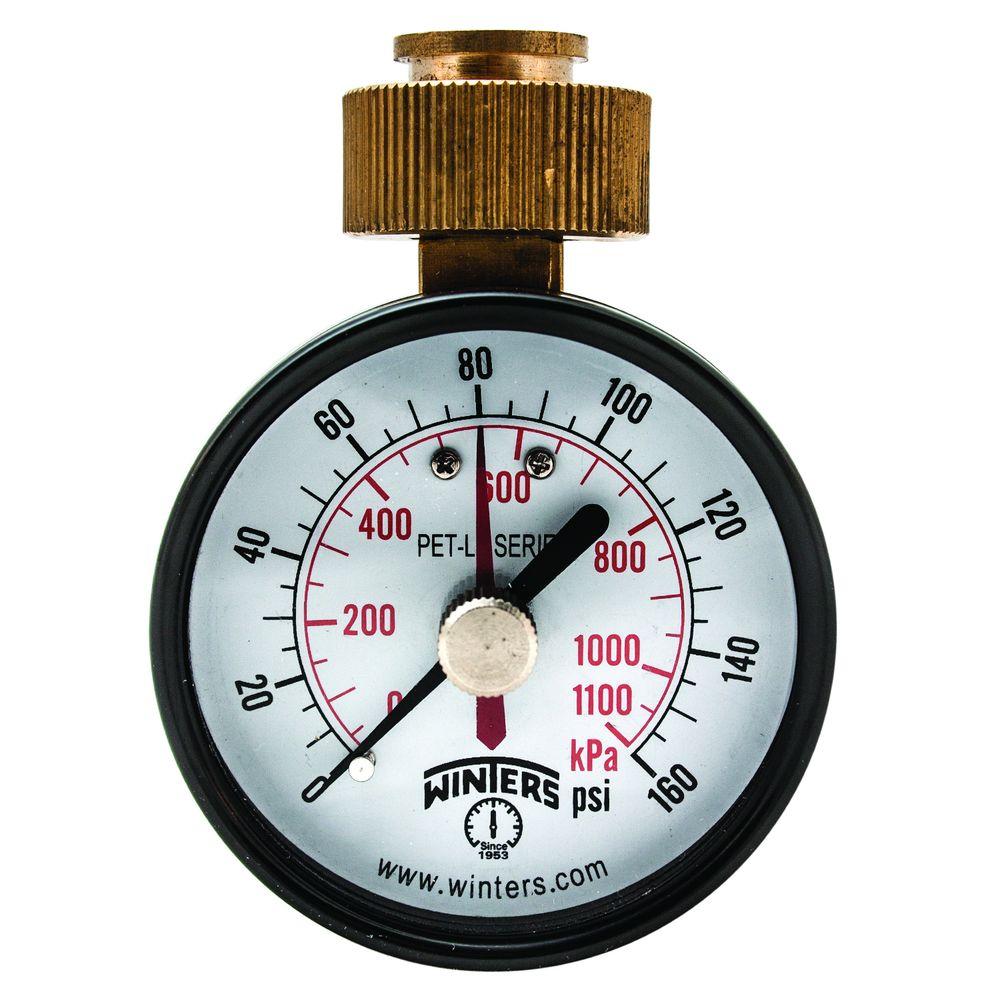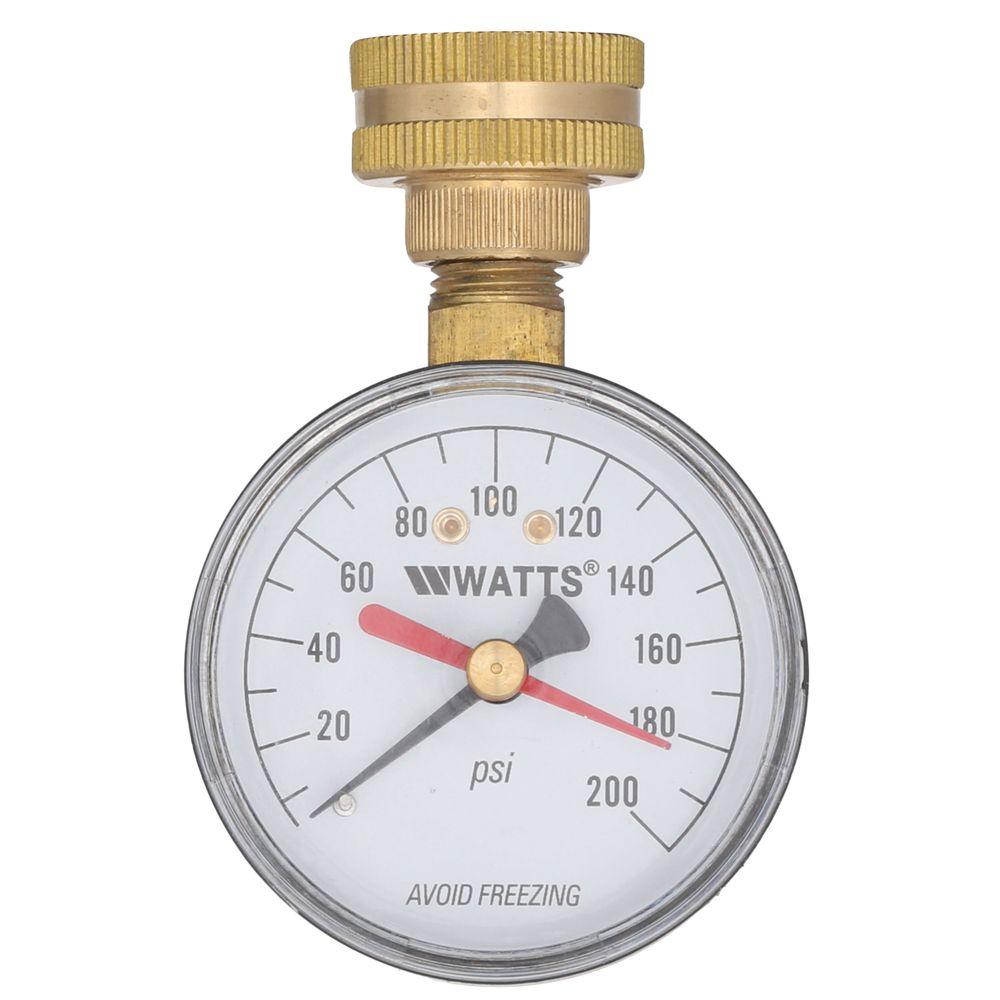I posted this before the pictures were posted.
I...now water is luke warm. I also have to constantly clean the sink traps because they fill up with debris. On the dual heater setup, there is a line coming off the bottom of the left heater also. Not sure why this would be needed if properly configured.
Where does it leak? Fitting, a valve, a pipe leak? Leaks at both water heaters? Are they gas or electric water heaters?
Pictures would help.
Generally, at the picture below two water heaters in series would be "B" of one water heater would be connected to "A" of the other. and "B" of the other would feed the house. Parallel connection both "B's" would be connected together to feed the house. But your statement that a pipe comes from the bottom. Where does it go? "J" are your drain valves.
Since you mentioned debri in the sink traps tell me that both water heaters are filled with sediment and if you have hard water it always will be prevalent. Turning off one heater and end up with warm water also suggest one heater is not working 100%. If they are electric one electric element is burned out. if gas there's a heavy coating of minerals deposits on the heat exchanger.
Sound like the best solution is to hire a plumber. Install only one 50 gal water heater with temperature mixing valve and an expansion tank (required now in most area's). Set the temperature to 140 degrees and the mixing valve would need to be adjust to no more than 120 degrees or less. If you have small kids in the home set it to 110 and if the water temp seems too low adjust the temperature at the mixing valve a few degrees at a time.
Another option is to install a tankless system. If you have electric the cost to rewire for the proper load requirement can get expensive or your electric panel would not be able to add the additional load. A large enough tankless you may never run out of hot water during use.
A choice would be up to you by the cost difference between one conventional water heater vs the additional cost of a tankless. If your more concerned about meeting your home hot water demand tankless is the way to go but if your budget is tight, a conventional water heater would be the choice.

